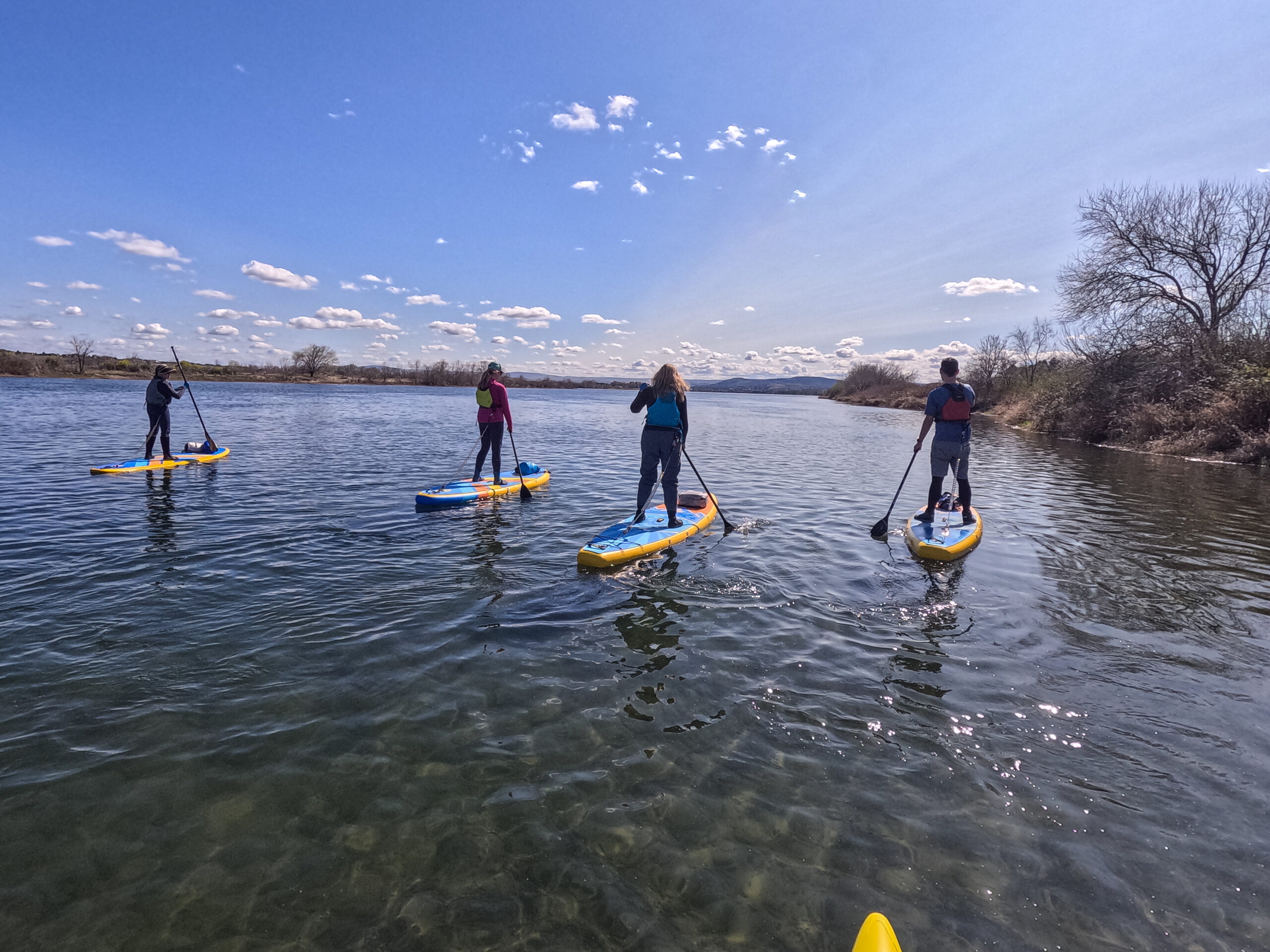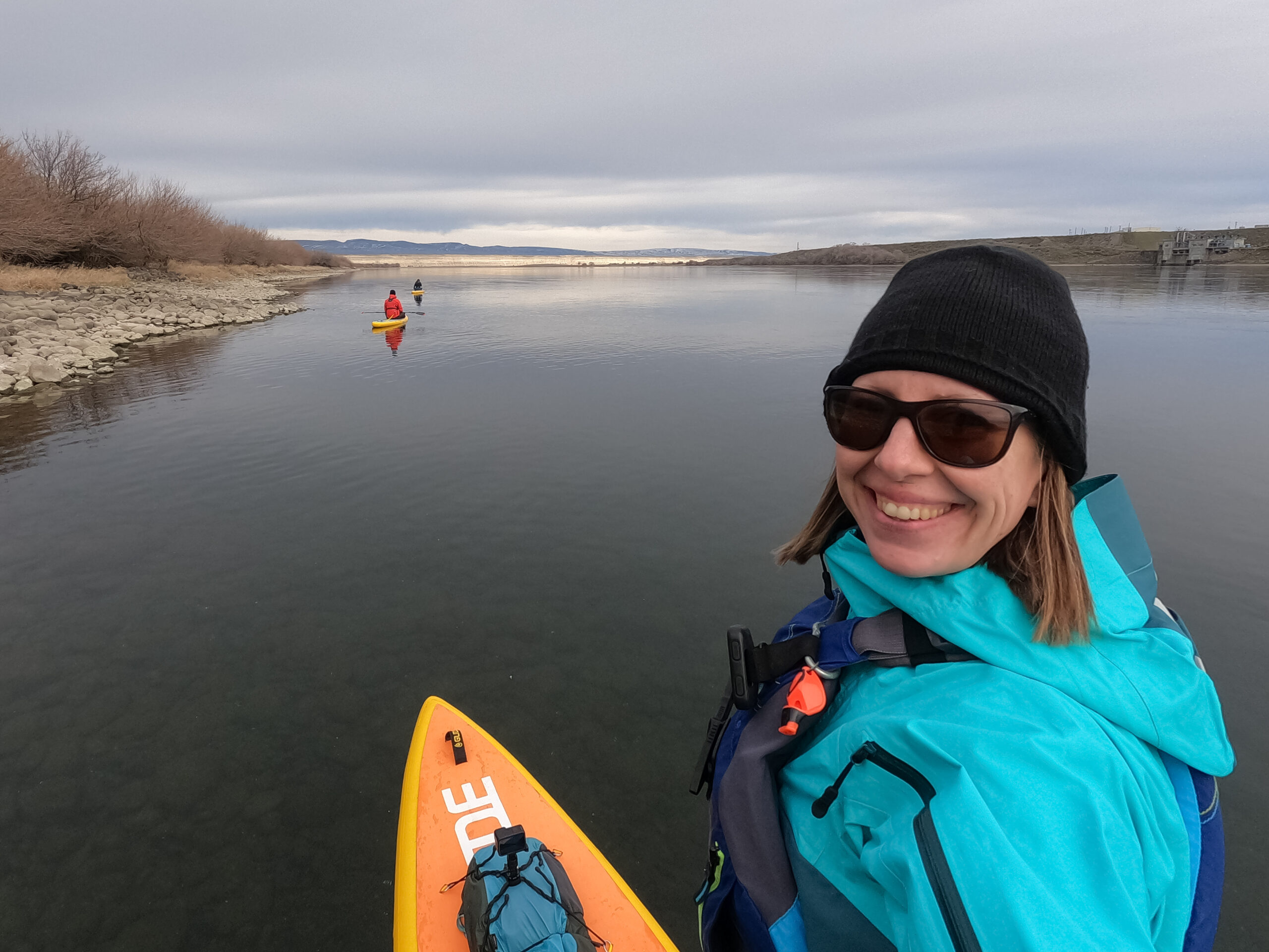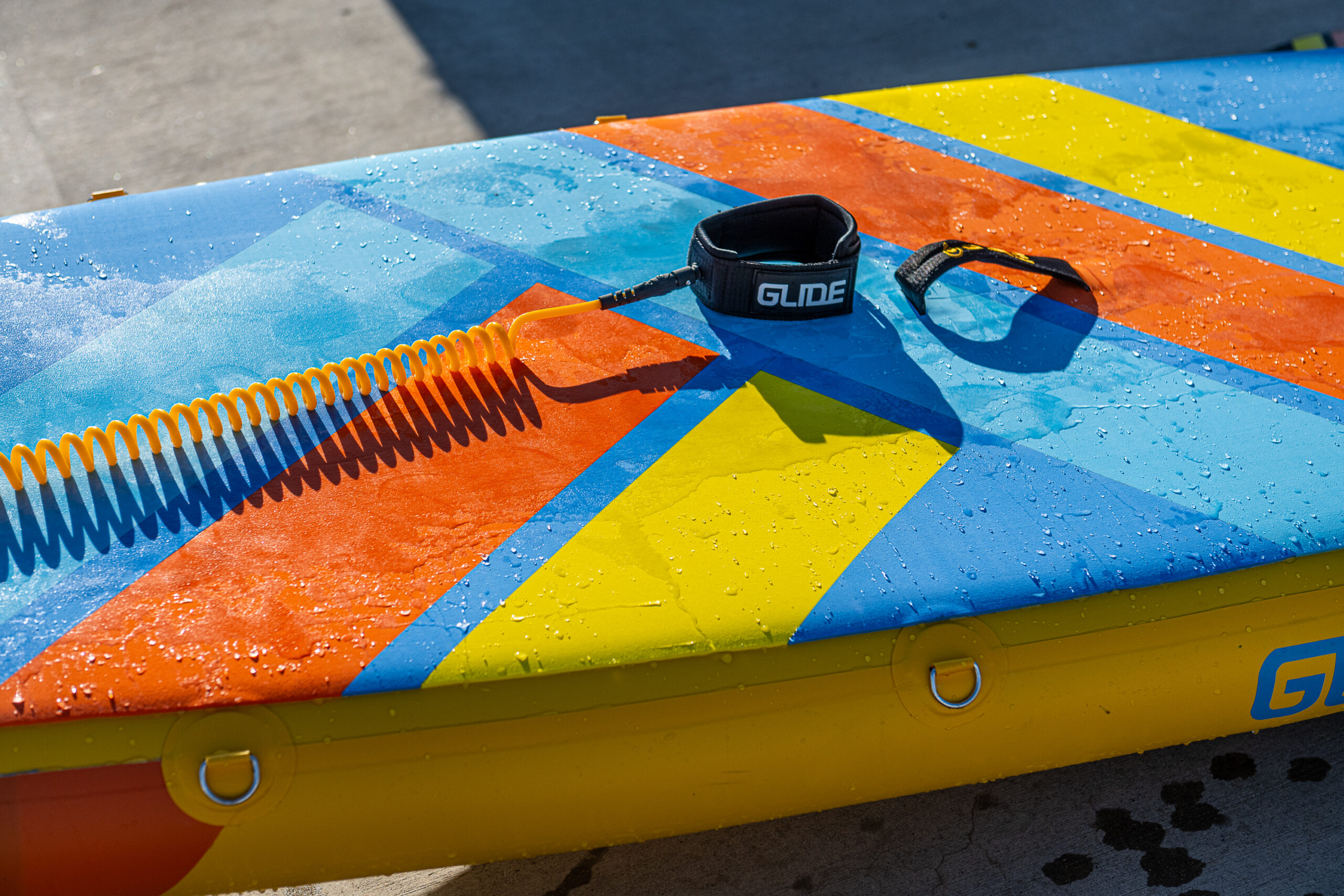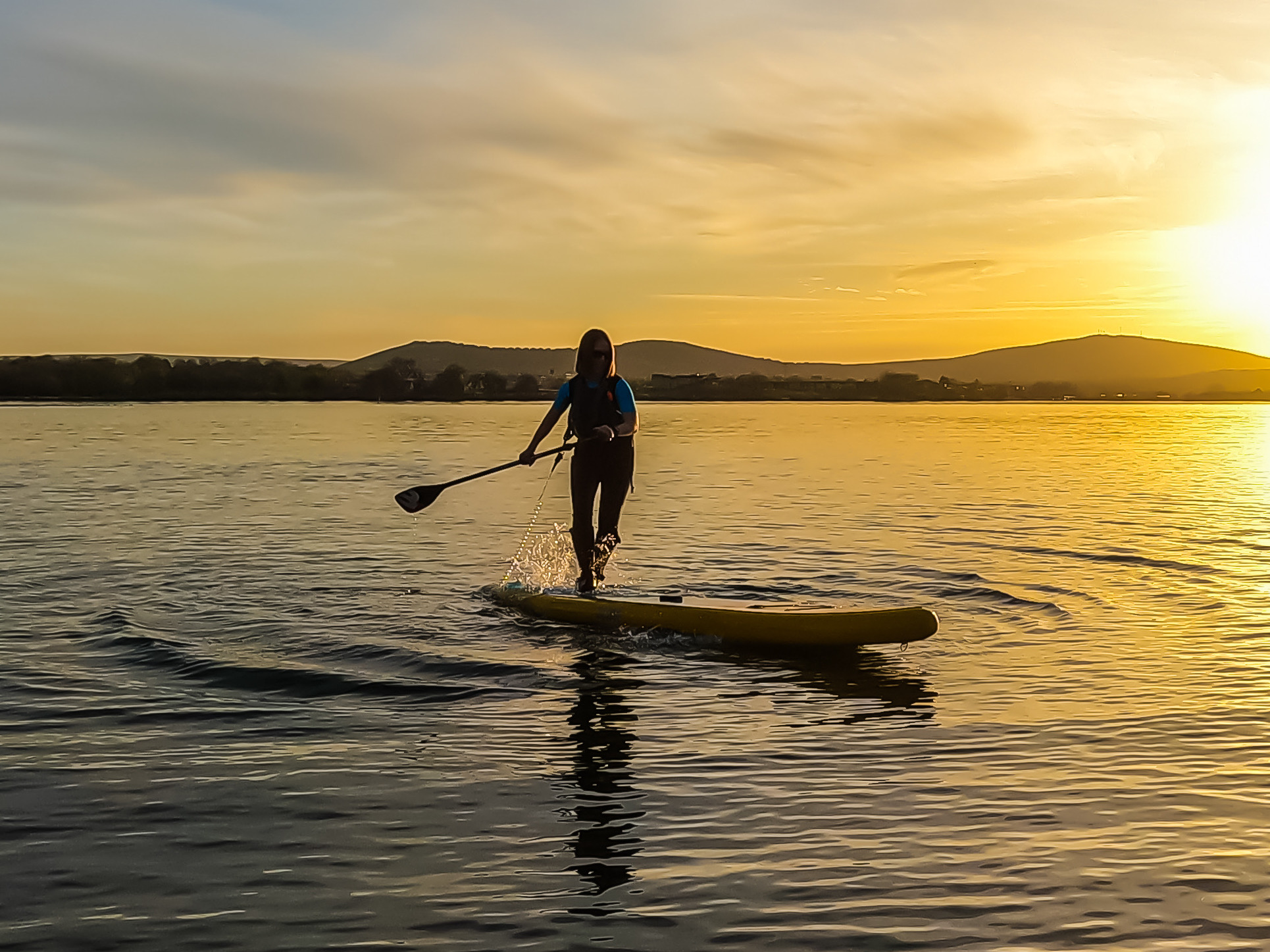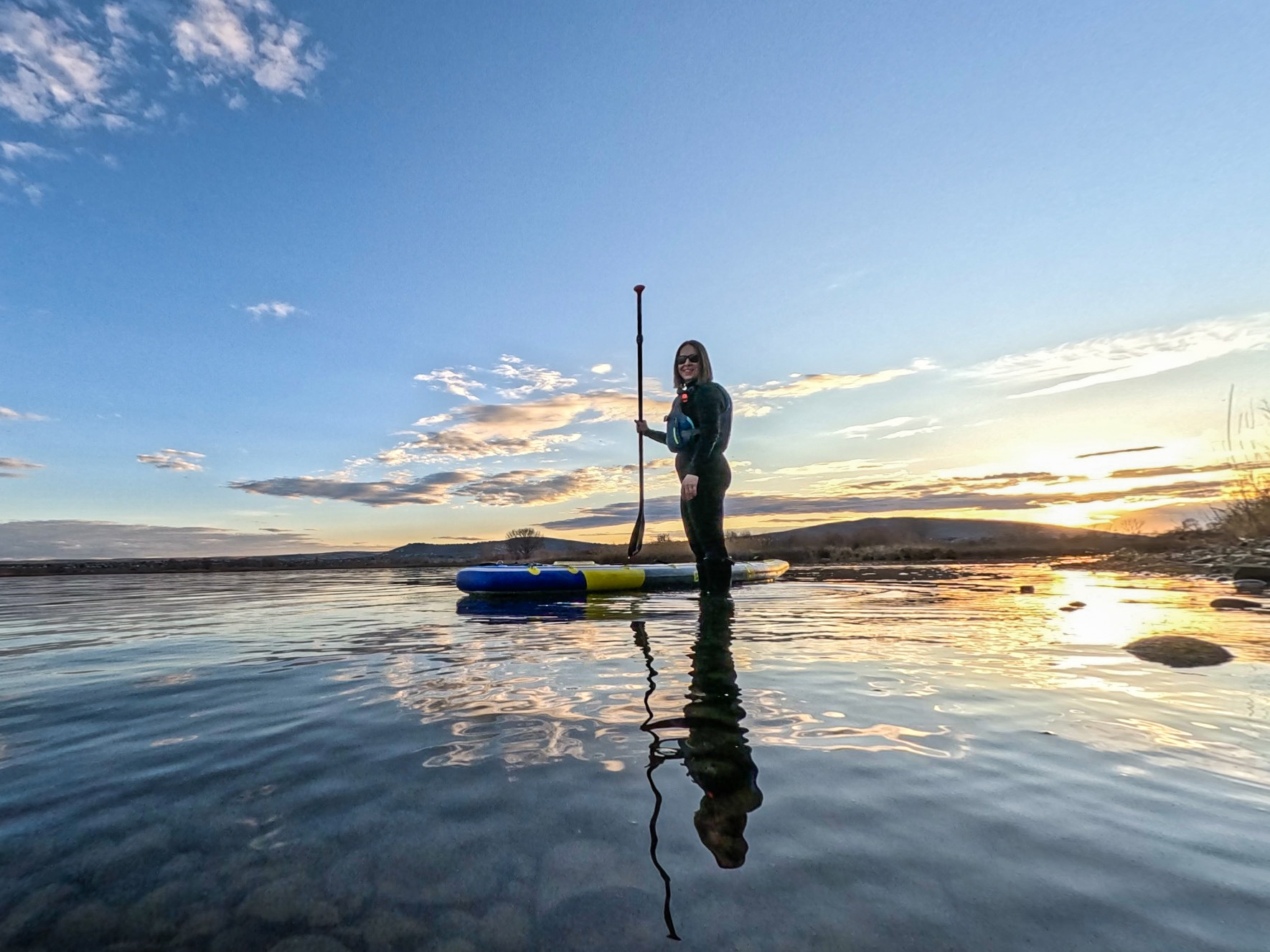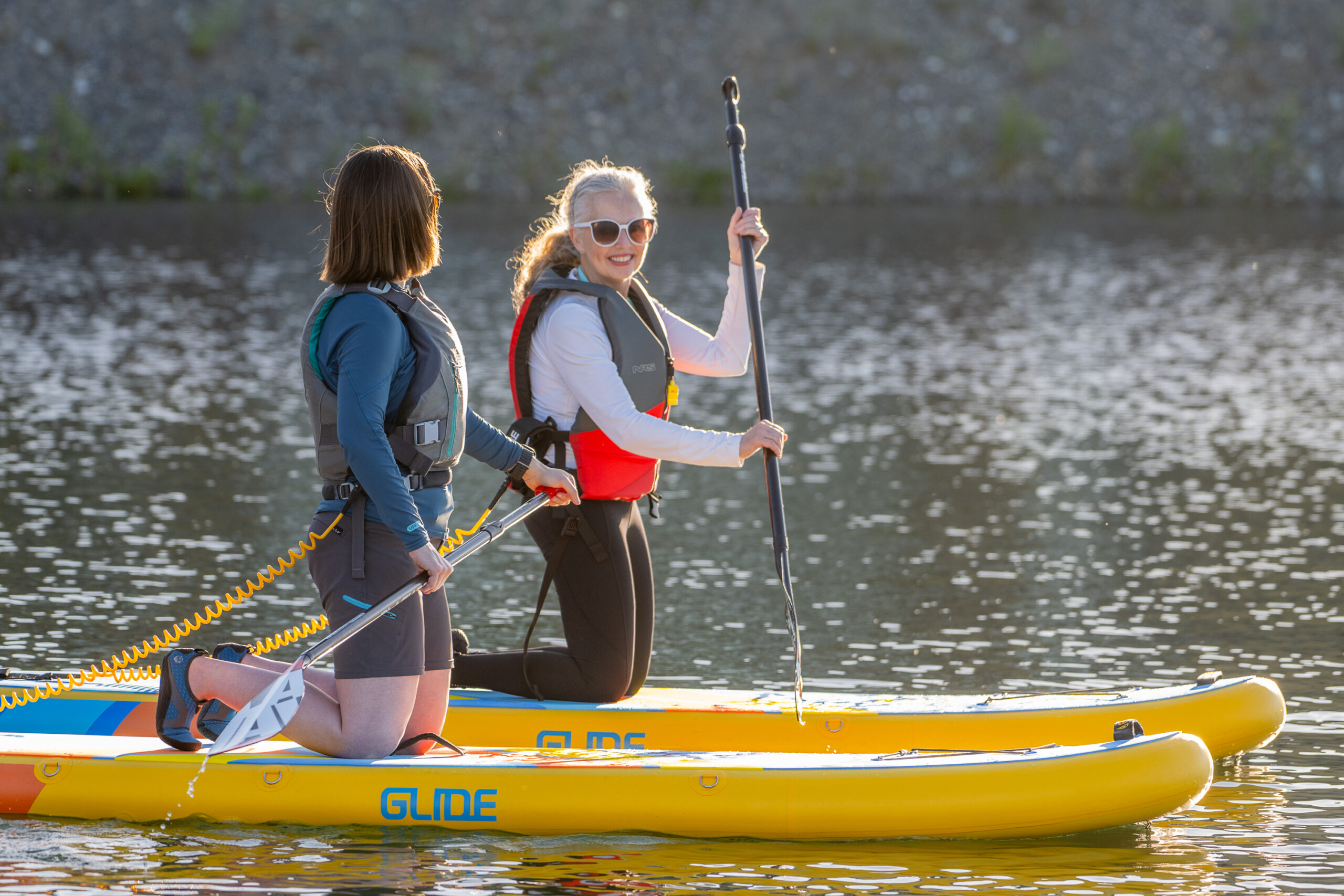Winter paddleboarding in the Tri-Cities unlocks a whole new level of adventure—quiet waterways, stunning landscapes, and a chance to experience the Columbia River in its most peaceful state. But with colder temperatures comes the need for proper gear. While our Winter Paddling 101 blog covered essential safety practices, this guide focuses specifically on the must-have equipment to keep you warm, dry, and ready for winter paddling. Italicized words in this blog are weblinks to products or additional articles and information.
1. Dress for the Water, Not Just the Weather
Cold-water paddling requires more than just bundling up—it’s about choosing the right materials to protect against immersion.
- Drysuit vs. Wetsuit: A drysuit provides full waterproof protection and allows for layering, making it the best choice for winter paddling. A 3/2mm or thicker wetsuit insulates by trapping a thin layer of water against your skin, but it’s better suited for milder winter conditions.
- Layering for a Drysuit: Since a drysuit itself provides no insulation, proper layering is critical. Start with a moisture-wicking base layer (merino wool or synthetic) and add an insulating mid-layer (NRS lightweight and expedition weight apparel work well). Avoid cotton, which retains moisture and causes heat loss.
- Wetsuit Enhancements: A wetsuit is meant to be worn alone, but adding a rash guard underneath prevents chafing and improves comfort. Wearing splash wear over a wetsuit helps block wind and water, retaining warmth for longer sessions.
- Head & Ear Protection: A neoprene hood or thermal headband minimizes heat loss from your head and ears. We like SealSkinz waterproof beanies or NRS Storm Cap or Hood for added warmth.
- Neoprene Gloves or Mittens: Keeping your hands warm is essential for maintaining grip and dexterity. The NRS Maverick Gloves or NRS Toaster Mitts provide both warmth and a solid grip. Our favorite are the NRS Veno Mitts, but they are currently on closeout.
- Winter Footwear: Keeping feet warm and dry is critical. Our top recommendation is the NRS Boundary Boots—full neoprene coverage up to the knees with excellent warmth and flexibility.
Pro Tip: For extra warmth, use hand warmers inside your gloves or layer them between wool liner socks and thicker wool socks to keep your feet warm during long paddles.
2. Essential Safety Gear
Winter paddling comes with added risks, so proper safety gear is non-negotiable.
- PFD (Personal Flotation Device): A Type III PFD is ideal for winter paddling. The NRS Ninja OS offers a low-profile fit with insulation benefits, while Vaikobi’s high-visibility PFDs ensure maximum visibility in all-weather conditions.
- Whistle: Required by law—opt for one that works even when wet, like the Fox 40 Epik CMG.
- Leash: A quick-release leash is recommended in our area. Staying attached to your board is critical in cold conditions, allowing for faster re-entry. NRS Quick-Release SUP Leash is a great option.
- Hypothermia Kit: Always pack a dry bag with emergency layers, a waterproof phone case, a mylar emergency blanket, and a compact first-aid kit.
3. Gear Adjustments for Winter
Your board and gear setup may need small but important adjustments for winter paddling.
- Inflatable vs. Hardboard: Inflatable boards offer better insulation and stability in cold water. However, they sit higher on the water, making re-entry more challenging when wearing bulkier winter gear. Practice remounting before heading out in extreme conditions.
- Deck Bag for Gear Storage: An insulated deck bag keeps essentials from freezing while ensuring easy access to snacks, hydration, and safety gear.
4. Additional Comfort & Convenience Items
A few extra pieces of gear can make your winter paddling experience even better.
- High-Visibility Gear & Lights: With shorter daylight hours, proper lighting is essential for both visibility and safety.
- ACR ResQFlare Electronic Flare Boat Survival Kit – This kit provides a reliable distress signaling option. This USCG-approved kit includes an electronic flare, a water-activated C-Strobe rescue light, and essential emergency tools like a whistle, signal mirror, and dry bag. It also meets USCG requirements.
- Luci Outdoor 2.0 Inflatable Solar Light – A lightweight, solar-powered light that attaches to your board for extra visibility.
- Princeton Tec Eco Flare – A compact personal beacon—attach it to your PFD so that you remain visible in low-light conditions.
- Thermos: Hot tea or an electrolyte-rich warm beverage helps regulate body temperature during and after paddling.
Pro Tip: Pack a warm-up kit in your vehicle—include a dry change of clothes, a hot beverage, snacks, towel or blanket, hand warmers, changing mat and robe, and extra layers to help you warm up quickly after your session.
Winter Paddling in the Tri-Cities: Be Prepared
With local water temperatures dropping below 40°F in winter, dressing for immersion, carrying the right safety gear, and staying aware of conditions is critical. Stick to shorter sessions, stay close to shore in populated areas, and always check the weather before heading out.
What’s Your Go-To Winter Gear?
We’d love to hear from you! What’s the one piece of cold-weather paddling gear you won’t leave shore without? Drop a comment or tag Aqueous SUP in your winter paddling setup photos!
